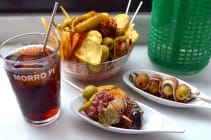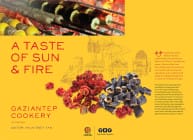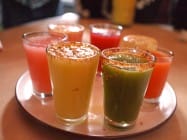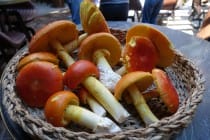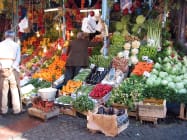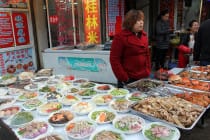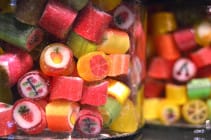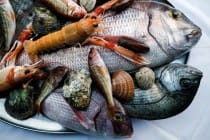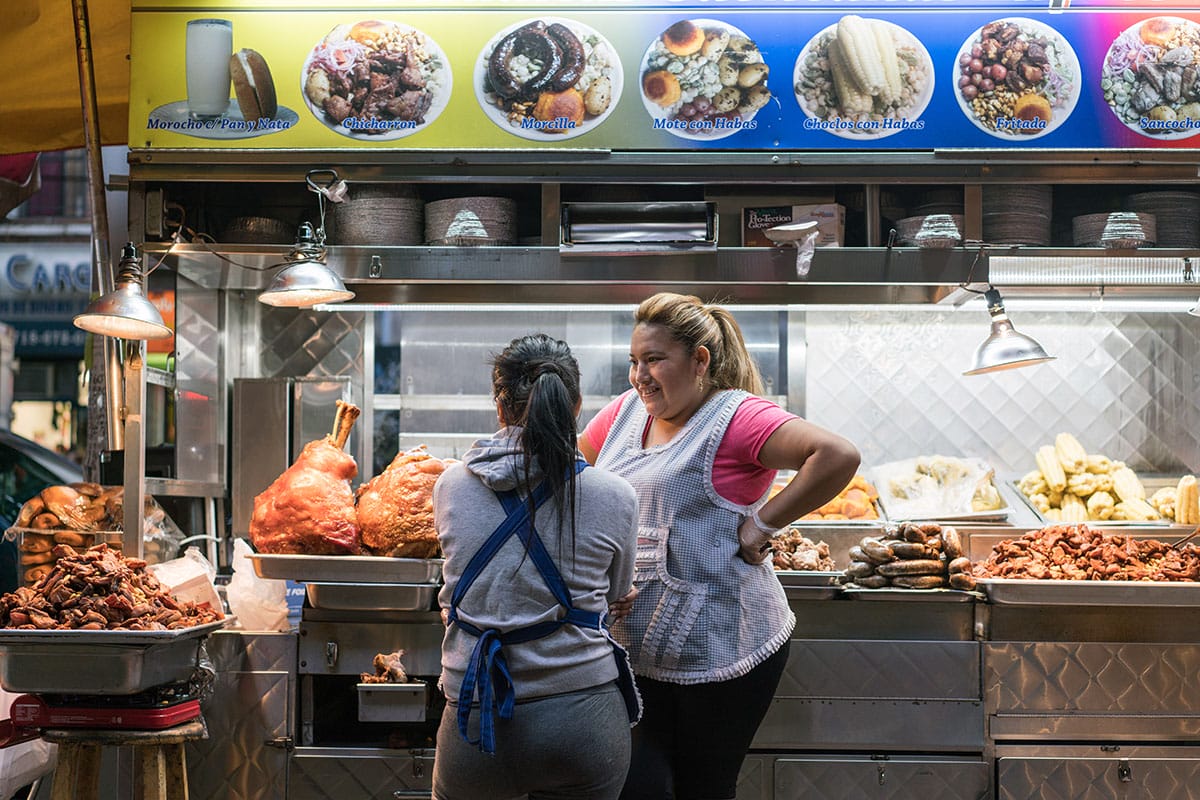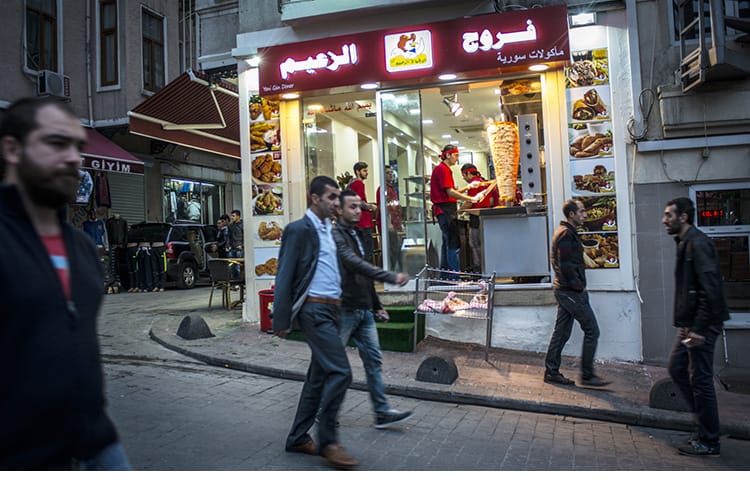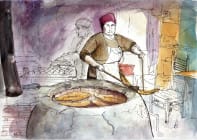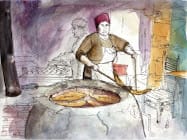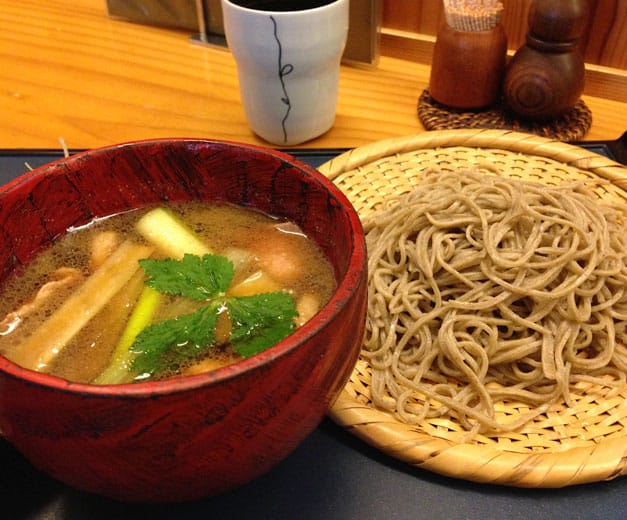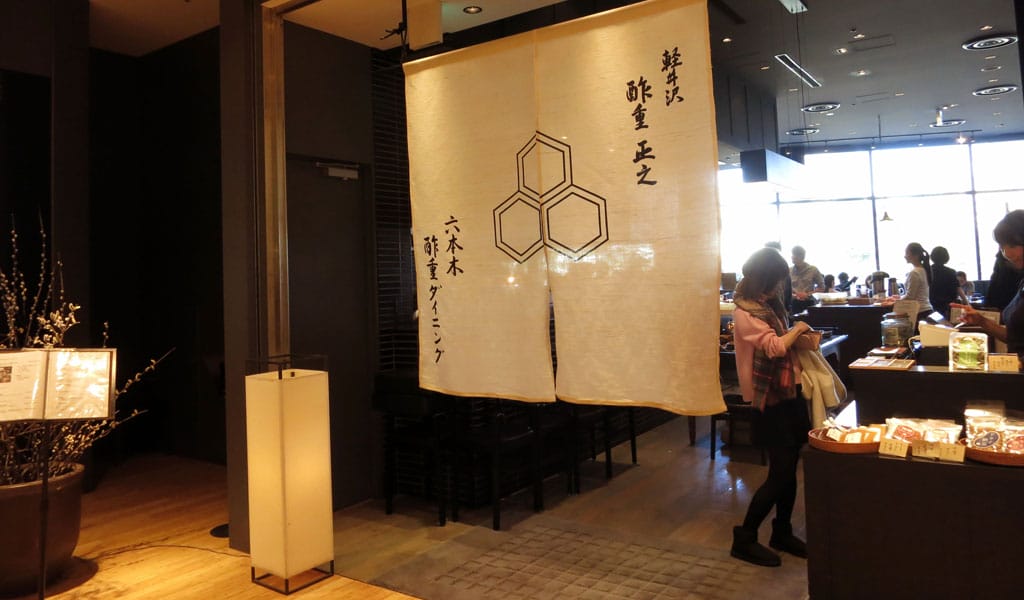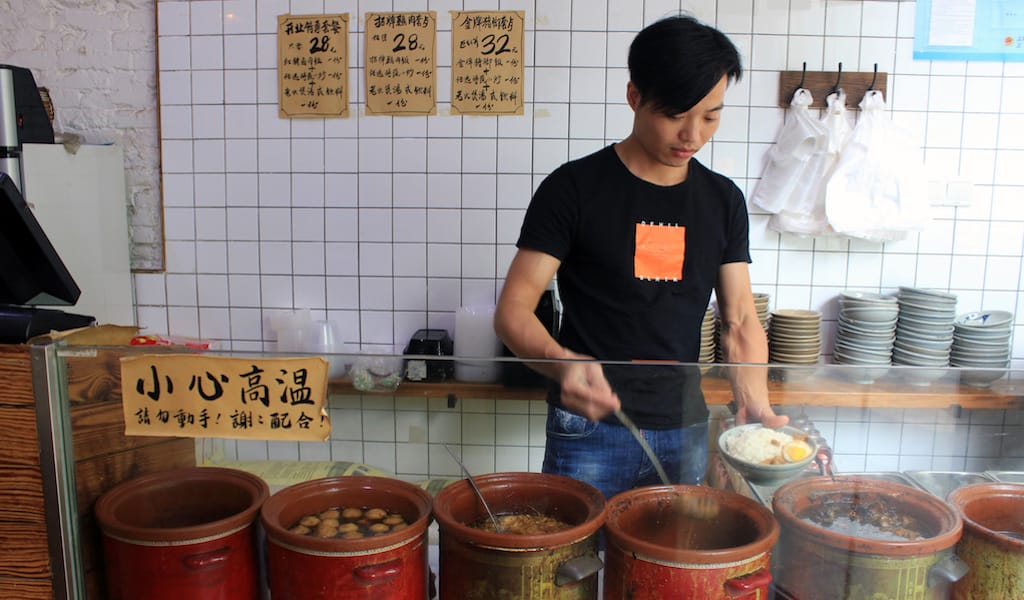Editor’s note: As the year comes to a close, we honor some of the people who are keeping up traditions on the Japanese food scene. And we remember the foods we’ve dreamt about eating again and again from each of them.
Nodaiwa
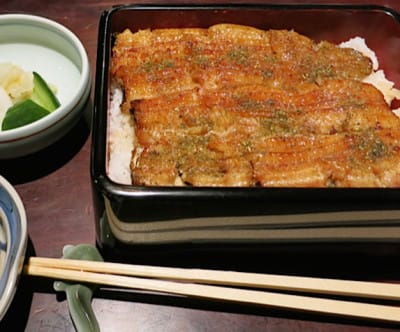 This 200-year-old restaurant, one of Tokyo’s best sources of wild-caught unagi (freshwater eel), is housed in a building brought from Hida-Takayama in Gifu prefecture, which is famous for gassho-zukuri farmhouse architecture, with its massive dark wooden beams and thatched roofs. The structure was dismantled and then hauled down to Tokyo piece by piece and reassembled in the modern building where Nodaiwa offers a small glimpse of traditional taste and skill, with vintage touches throughout. Fifth-generation chef Kanejiro Kanemoto keeps the tradition alive and deserves his Michelin star. His passion for offering only the best eels available is evident in everything he serves.
This 200-year-old restaurant, one of Tokyo’s best sources of wild-caught unagi (freshwater eel), is housed in a building brought from Hida-Takayama in Gifu prefecture, which is famous for gassho-zukuri farmhouse architecture, with its massive dark wooden beams and thatched roofs. The structure was dismantled and then hauled down to Tokyo piece by piece and reassembled in the modern building where Nodaiwa offers a small glimpse of traditional taste and skill, with vintage touches throughout. Fifth-generation chef Kanejiro Kanemoto keeps the tradition alive and deserves his Michelin star. His passion for offering only the best eels available is evident in everything he serves.
The Nodaiwa chefs manage to coax out a perfect blend of softness and unctuousness in the unagi, which is lovingly served over perfectly cooked rice in lacquer boxes. The eel is full-flavored and bold. In our dreams we scoop the rice and eel together with chopsticks and feel the combination of textures blending in the mouth.
Naniwa Café and Bakery
Tucked into one of the back streets off the shoten gai shopping street, in the shadow of the Mori Art Museum at Roppongi Hills, Naninwa is easy to find because there is always a line outside. The café has been making taiyaki for over a hundred years at the same location, where the eldest son of the owning family greets customers as both long-lost friends and neighbors who have come to eat their special Japanese sweets. The welcome always includes an estimate of the wait to receive our order.
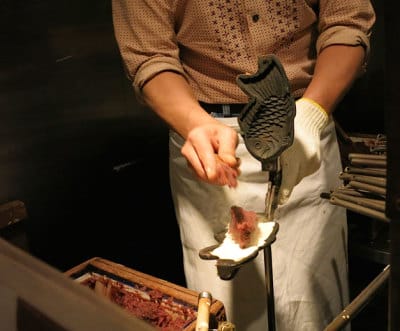 The classic version of taiyaki is a fish-shaped pastry with a waffle-like exterior and a filling of red bean (adzuki) paste. Naniwa follows the same recipe they’ve used for more than a century, using adzuki beans specially grown for them on the northern island of Hokkaido. The baker scoops batter into a fish-shaped mold, then heaps bean paste on top and finally coats it with another layer of batter. The mold is closed and put over a flame to bake. The result is then allowed to rest for a few seconds before it’s presented to us as we remain perched on the little bench inside the café, allowing the fresh-baked aroma to power our daydreams.
The classic version of taiyaki is a fish-shaped pastry with a waffle-like exterior and a filling of red bean (adzuki) paste. Naniwa follows the same recipe they’ve used for more than a century, using adzuki beans specially grown for them on the northern island of Hokkaido. The baker scoops batter into a fish-shaped mold, then heaps bean paste on top and finally coats it with another layer of batter. The mold is closed and put over a flame to bake. The result is then allowed to rest for a few seconds before it’s presented to us as we remain perched on the little bench inside the café, allowing the fresh-baked aroma to power our daydreams.
Kappa Soba
When the leaves begin to change, we head to Tochige prefecture for a day of koyo, maple-leaf viewing. The visits always include a stopover with Kazuhiko and Takako Watanabe, passionate soba makers. They quit their salaried jobs when their two daughters were grown and followed their dream by opening Kappa Soba, their restaurant located in a cozy, modern structure on the side of a busy road. Kazuhiko learned the art of cutting noodles from his mother and taught himself the rest. They source buckwheat from all over Japan and post the day’s origin on wooden pegs next to the noren flag covering the front door. There are two kinds of soba noodles served: the traditional noodle with part buckwheat and part wheat and the harder-to-cook 100 percent buckwheat variety. Kazuhiko grinds the flour himself and stands behind a picture window in a small room rolling and hand-cutting soba all day. Takako runs the kitchen and pours sake at night. While we wait for our meal we ponder the fragrant local maitake mushroom tempura they serve as a side dish, truly the stuff that dreams are made of – the tempura batter crisp and light, the mushroom pungently earthy. We swipe it in some salt and continue our reverie until Takako turns up with duck soba: slices of juicy duck perched atop a bowl of noodles in warm broth and proudly wearing sliced Japanese leeks on top. We’ll dream of this until next year.
Otafuku
Serving oden since 1916, this Tokyo institution is a family-run business handed down through generations. People come from all over for the beautifully crafted food, but usually it’s filled with locals out for a night of drink. The Meiji-era restaurant looks out of place surrounded by the box-like buildings on Kotodoi Dori, much like the last holdout in rampant gentrification. We walk the street amongst all the concrete, and suddenly a large lantern and garden greenery beckon to us, inviting us to enter another era. Once inside, street sounds subside, eyeglasses steam up. Dim lights recall life before fluorescents, when time was slower and so was food. Blink a few times and we are transported to what it must have been like to eat and drink in old Tokyo.
 We follow a long counter with low seats as it doglegs around to the left and watch diners in animated conversation over their food and drink. Two chefs stand behind the counter fronting oden pots, ready to serve up a choice of ingredients.
We follow a long counter with low seats as it doglegs around to the left and watch diners in animated conversation over their food and drink. Two chefs stand behind the counter fronting oden pots, ready to serve up a choice of ingredients.
We dream of meals here nestled along the cypress counter, rubbing elbows with new friends. We dream of the warming brew of fish cakes and hot sake to wash it down with. We dream of the friendly owners and servers who are dedicated to keeping the tradition of oden alive.
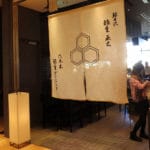 June 14, 2021 Suju Dining Rokkaku
June 14, 2021 Suju Dining Rokkaku
Many people think of miso as the soup that gets tacked onto every Japanese meal. We can […] Posted in Tokyo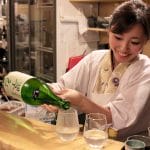 December 12, 2018 Best Bites 2018
December 12, 2018 Best Bites 2018
This was a year of culinary highs for sure, one that involved freshwater eel, lamb […] Posted in Tokyo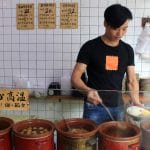 December 11, 2018 Best Bites 2018
December 11, 2018 Best Bites 2018
Shanghai usually opts for trendy over traditional, and 2018 was no different. Dining and […] Posted in Shanghai
Published on December 14, 2015
Related stories
June 14, 2021
TokyoMany people think of miso as the soup that gets tacked onto every Japanese meal. We can still remember our first experience of Japanese food in the West, when the waiter brought the soup at the end of the meal, and someone thought he’d forgotten to serve it at the beginning. Any self-respecting Japanese meal,…
December 12, 2018
TokyoThis was a year of culinary highs for sure, one that involved freshwater eel, lamb ramen, sake and more. Kyuri Cucumbers at Sobaya Nicolas Following a visit to Kyoto’s Nishiki Market, I felt myself yearning for local kyo yasai, vegetables from the Kansai region of Japan. That night we were invited by a local artisan…
December 11, 2018
ShanghaiShanghai usually opts for trendy over traditional, and 2018 was no different. Dining and drinking “hotspots” tended to appear in the slew of newly-opened ultra-lux five-star hotels, including the Middle House, Edition, Sukkothai and BVLGARI hotels, to name just a few. In the everyday budget range, we’re still seeing mom-and-pop shops struggle to survive the…

















